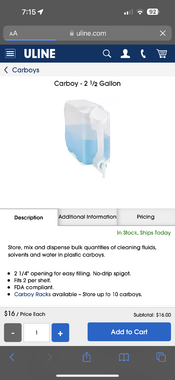Is the swirly pattern visible on the prints consistent with the image on the negative?
How are you doing the development; drums, trays, roller transport processor? What development time + temperature?
How was the chemistry stored exactly; you noted duration and time, but not if any oxygen could get to it during storage.
How are you replenishing the developer; i.e. at what rate?
Is there any possibility of cross-contamination of the developer with blix (this would be my first guess as to an explanation of what you're seeing)?
If you develop an
unexposed test strip, does it come out perfectly white?No oxygen can get into my storage, I mix my chemicals in water dispensing jugs, so I never actually have to open them and expose them to air
Is the swirly pattern visible on the prints consistent with the image on the negative?
How are you doing the development; drums, trays, roller transport processor? What development time + temperature?
How was the chemistry stored exactly; you noted duration and time, but not if any oxygen could get to it during storage.
How are you replenishing the developer; i.e. at what rate?
Is there any possibility of cross-contamination of the developer with blix (this would be my first guess as to an explanation of what you're seeing)?
If you develop an unexposed test strip, does it come out perfectly white?
I mix my chemicals in water dispensing jugs like the picture that I attached below. The only time they’re ever exposed to air is when I am mixing them. Otherwise, I keep them sealed in the jug and only pour what I need from the jug. I have one for each separate solution. One for my stock solution one for my working solution. And also each subsequent solution. As for the image, yes, the image is coming out consistent with the negative. It’s just the color that is concerning. I am using a Unicolor drum and mechanical roller, that does the rolling for me. Like I mentioned it is an Arista RA4 kit that I purchased, which included all the chemicals. I have a Cinestill TCS 1000 that i use to heat my chemicals in a water bath. There are several temperatures at which. Arista has recommendations for in the instructions however, I usually go for the developer heated at 95 + .25 degrees Fahrenheit and I let that develop for one minute and 10 seconds, and the blix is able to be heated to a less specific temperature of 85 to 95°F. And then I’d put that on the roller for 60 seconds. After the developer and blix are completed, I let it sit under the faucet of a modest current of running water, same temperature as the Blix, for 2 to 3 minutes. Also, I think it’s worth noting that I am adding replenishment solution to my working solution of both the developer and the blix. The ratio varies, depending on how much paper I am planning on developing, however, with this particular session, the measurements were 120 mL of working solution to 16.6 mL of replenishment and 120 mL of working solution to 22.2 mL of replenishment respectively. And just in case anyone thinks this is important to add, I followed the directions that came with the Arista RA-4 kit very closely, and more importantly I have had success, prior to this with the same kit, so I don’t think I did any of the initial mixing incorrectly. I highly doubt there are any issues with cross-contamination, I am extremely careful not to let that happen with any of my print/negative developing chemicals. It has taken me a very long time to locate many of my chemicals and I have spent a lot of money on these chemicals, and I am extremely careful with them. I don’t do a whole lot of color printing, which is the only t reason I purchased the Arista RA-4 kit, otherwise, I strictly purchase individual, laboratory grade,(mostly Kodak) chemicals for all of my other developing. I am very particular about my chemicals, so, as I said, this is highly doubtful. But, I can’t rule it out 100%. I have not tried developing in unexposed test strip as you suggested, I will have to try this and get back to you.














